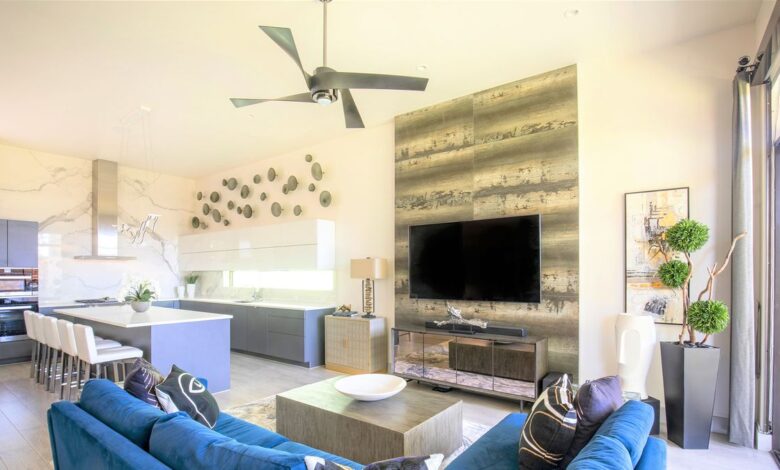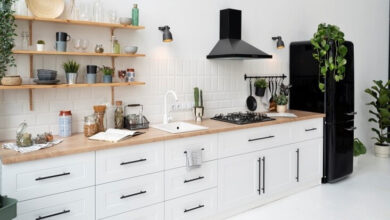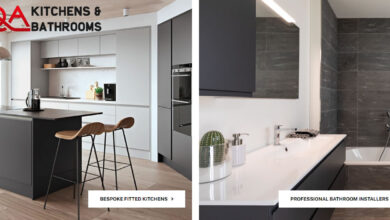Top 11 Tips for Creating a Multifunctional Room

In today’s world of compact living spaces and the ever-increasing need for versatility, the concept of multifunctional rooms has gained immense popularity. These spaces offer the flexibility to serve multiple purposes, maximizing the utility of a single area while minimizing square footage. Whether you’re a city dweller with limited space or a homeowner seeking to optimize your floor plan, a well-designed multifunctional room can transform your living experience.
A multifunctional room is a space that seamlessly integrates various activities and functions into a single, cohesive area. It could be a living room that doubles as a home office, a guest room that transforms into a workout studio, or a dining area that moonlights as a crafting nook. The key to creating a successful multifunctional room lies in thoughtful planning, smart storage solutions, and a design that effortlessly transitions between different modes of use.
Benefits of a Multifunctional Space
Embracing a multifunctional room design offers numerous advantages. Firstly, it maximizes the utility of your available space, allowing you to accommodate multiple activities within a single area. This approach is particularly beneficial for smaller homes or apartments where square footage is at a premium. Additionally, a well-executed multifunctional room can enhance organization, reduce clutter, and create a sense of openness and flow throughout your living space.
Tip 1: Assess Your Needs
Before diving into the design process, it’s essential to assess your needs and identify the primary functions you wish to accommodate within the multifunctional room. Start by listing the activities you envision taking place in the space, such as working, entertaining, exercising, or sleeping. Prioritize these functions based on their frequency and importance in your daily life.
Once you’ve identified the primary functions, consider any secondary uses that could be incorporated. For example, if the room will serve as a home office, you might want to include a comfortable seating area for occasional guests or a reading nook.
Tip 2: Maximize Space with Smart Planning
Effective space planning is the cornerstone of a successful multifunctional room design. Start by creating a detailed floor plan, either by hand or using online tools or apps. Carefully measure the dimensions of the room and sketch out the potential layouts, considering the placement of furniture, storage units, and any other necessary elements.
Incorporate space-saving ideas into your plan. For instance, consider using furniture with built-in storage, opting for wall-mounted desks or shelves, or exploring fold-away or collapsible pieces that can be tucked away when not in use.
Tip 3: Choose Flexible Furniture
Furniture plays a crucial role in creating a multifunctional space. Look for pieces that offer versatility and can adapt to different uses. Consider investing in modular sofas or sectionals that can be rearranged to accommodate various activities, such as lounging, working, or entertaining. Opt for coffee tables with removable tops or adjustable heights, allowing them to serve as desks or dining surfaces when needed.
When selecting furniture, prioritize durability and style. Look for pieces made from high-quality materials that can withstand frequent use and potential wear and tear. Additionally, choose furniture with a timeless design that complements the overall aesthetic of your space, ensuring a cohesive and visually appealing environment.
Tip 4: Implement Effective Storage Solutions
Proper storage is essential in a multifunctional room, as it helps keep clutter at bay and ensures a streamlined, organized space. Consider incorporating built-in storage solutions, such as custom shelving units, cabinets, or closets, to maximize every inch of available space. Built-ins can be designed to blend seamlessly with the room’s aesthetics while providing ample storage for various items.
In addition to built-ins, explore vertical and horizontal storage strategies. Vertical storage options, like tall bookcases or wall-mounted shelves, can help utilize often-neglected space near ceilings. Horizontal storage solutions, such as ottomans with removable lids or under-bed storage containers, can maximize floor space while keeping items conveniently accessible.
Tip 5: Use Modular Elements
Modular design offers a flexible and adaptable approach to creating a multifunctional room. Modular furniture and accessories are designed to be easily reconfigured, allowing you to modify the layout and functionality of the space as your needs change over time.
Consider investing in modular shelving units, desks, or even wall partitions that can be rearranged or expanded as necessary. This approach not only provides versatility but also allows for easy updates or modifications without the need for major renovations.
Tip 6: Opt for Convertible Pieces
Convertible furniture is another excellent choice for multifunctional rooms, as it can transform to serve different purposes. Examples include sofa beds, Murphy beds (wall beds that fold into the wall when not in use), and dining tables that can expand or contract to accommodate varying group sizes.
When selecting convertible pieces, consider the ease of use and durability. Look for well-engineered mechanisms that facilitate smooth transformations, and ensure the materials used are robust enough to withstand frequent conversions.
Tip 7: Incorporate Technology Smartly
In our modern, tech-driven world, it’s essential to integrate technology into your multifunctional room without allowing it to become a cluttered eyesore. Consider investing in wireless solutions, such as Bluetooth speakers or wireless charging pads, to minimize visible cords and cables.
Explore multipurpose tech solutions that can serve various functions. For instance, a smart TV can double as a computer monitor or a display for video conferencing, while a voice-activated smart speaker can control lighting, music, and other smart home devices.
Tip 8: Integrate a Pneumatic Home Elevator
For those seeking to create a truly versatile and accessible multifunctional space, consider integrating a pneumatic home elevator. These innovative elevators are compact, energy-efficient, and require minimal structural modifications, making them an ideal solution for optimizing vertical space.
Pneumatic elevators offer numerous benefits, including improved accessibility for individuals with mobility challenges, increased property value, and the ability to transport heavy or bulky items between floors with ease. Additionally, they can help create a seamless transition between different levels, effectively expanding the usable square footage of your multifunctional room.
Tip 9: Select the Right Color Scheme and Lighting
Color and lighting play a significant role in defining the ambiance and functionality of a multifunctional room. When selecting a color scheme, opt for neutral tones that can easily adapt to different activities and moods. Consider incorporating pops of accent colors through accessories or accent walls to add visual interest and depth.
Proper lighting is equally important. Incorporate a combination of ambient, task, and accent lighting to create a well-lit and inviting space. Consider using dimmable fixtures or smart lighting systems that allow you to adjust the brightness and warmth of the light based on the activity at hand.
Tip 10: Design with Flexibility in Mind
Throughout the design process, keep flexibility at the forefront. Incorporate adjustable layouts that can be easily reconfigured to accommodate different activities. For example, consider using room dividers, curtains, or sliding doors to create temporary partitions or separate zones within the multifunctional space.
Additionally, explore reconfigurable design elements, such as modular furniture or movable wall units, that can be rearranged or repositioned as needed. This adaptability ensures that your multifunctional room can evolve with your changing needs and preferences over time.
Tip 11: Decorate to Define Different Areas
While maintaining an open and cohesive design, strategically use decorative elements to visually define different areas within your multifunctional room. Rugs, curtains, or room dividers can help delineate spaces and create a sense of separation without compromising the overall flow.
Incorporate visual cues, such as distinct wall colors, artwork, or lighting fixtures, to subtly distinguish different zones within the room. For example, a bold accent wall or a statement chandelier could signify the dining area, while a cozy reading nook might feature warm lighting and plush textiles.
Recap of Key Points
To summarize the top tips for creating a multifunctional room, let’s recap the key points:
- Assess your needs and identify the primary and secondary functions of the space.
- Maximize space with smart planning, using floor plans and space-saving ideas.
- Choose flexible and multipurpose furniture that can adapt to different uses.
- Implement effective storage solutions, including built-ins, and vertical, and horizontal options.
- Incorporate modular and convertible elements for easy reconfiguration.
- Integrate technology smartly, prioritizing wireless and multipurpose solutions.
- Consider a pneumatic home elevator for improved accessibility and vertical space optimization.
- Select a color scheme and lighting that enhances the room’s versatility.
- Design with flexibility in mind, utilizing adjustable layouts and reconfigurable elements.
- Use decorative elements to visually define different areas within the multifunctional space.
Encouragement to Embrace Multifunctionality
Embracing the concept of multifunctional rooms is not just a practical solution for maximizing space; it’s also a mindset that celebrates adaptability, ingenuity, and a commitment to living life to the fullest within the confines of your home. By implementing these top tips, you can unlock the potential of your living space, creating a harmonious and dynamic environment that seamlessly blends form and function.
Remember, the journey to designing a multifunctional room is an ongoing process that requires creativity, problem-solving, and a willingness to experiment. Approach it with an open mind, and don’t be afraid to make adjustments along the way. Ultimately, the true beauty of a multifunctional space lies in its ability to evolve with your changing needs, supporting your unique lifestyle and enabling you to live life on your terms.
So, embrace the multifunctional mindset, and let your living space become a canvas for your creativity and a testament to your commitment to making the most of every square foot. With a well-designed multifunctional room, you’ll not only optimize your space but also unlock a world of possibilities, where every inch serves multiple purposes and every corner is a celebration of efficient living.




